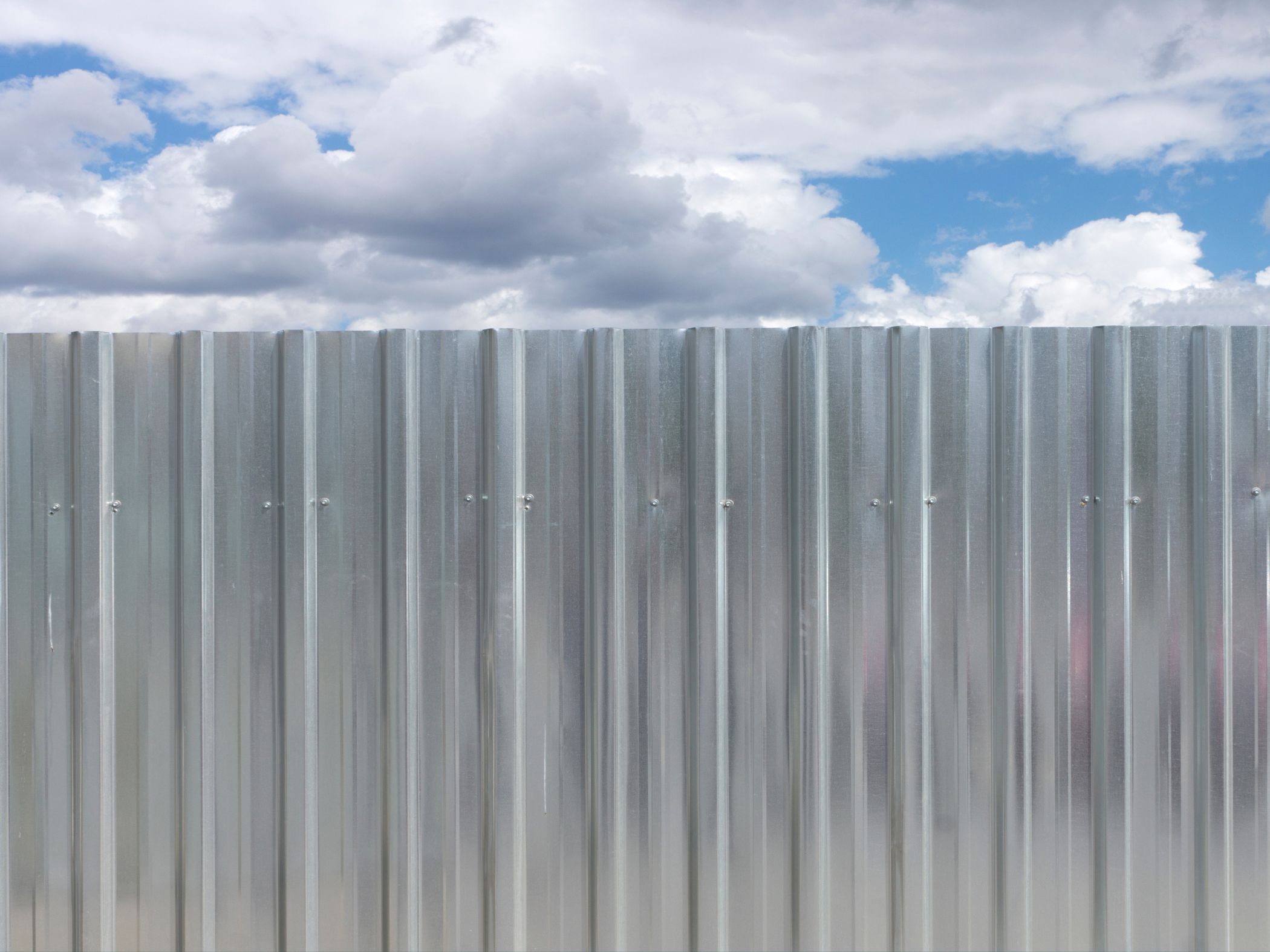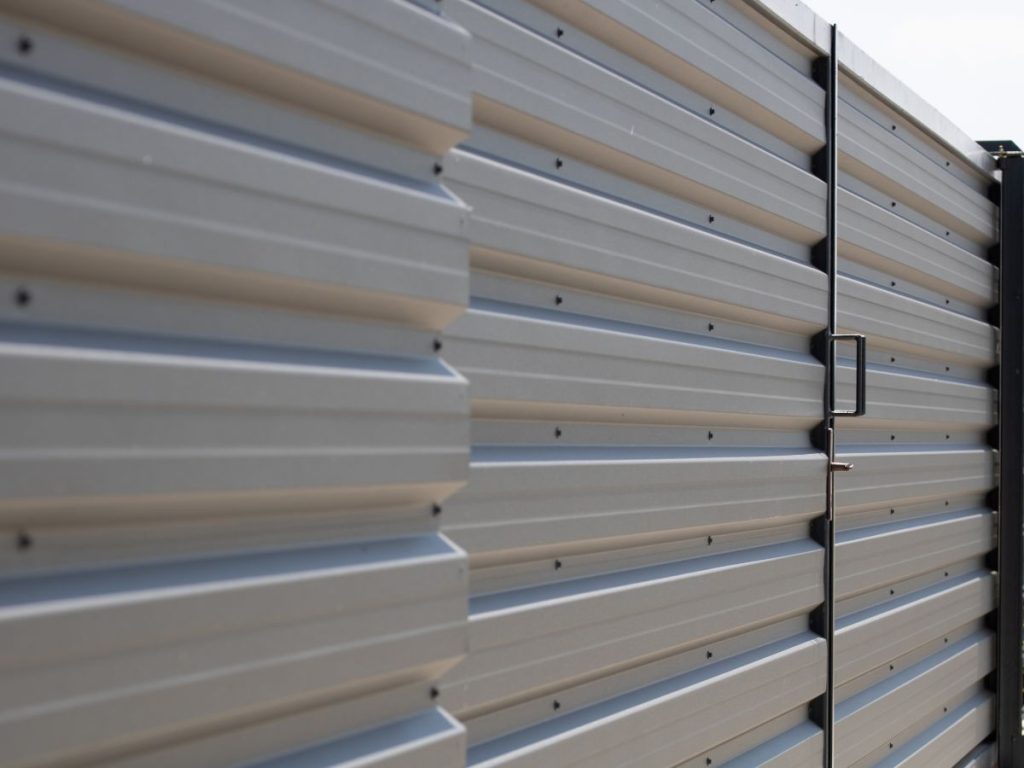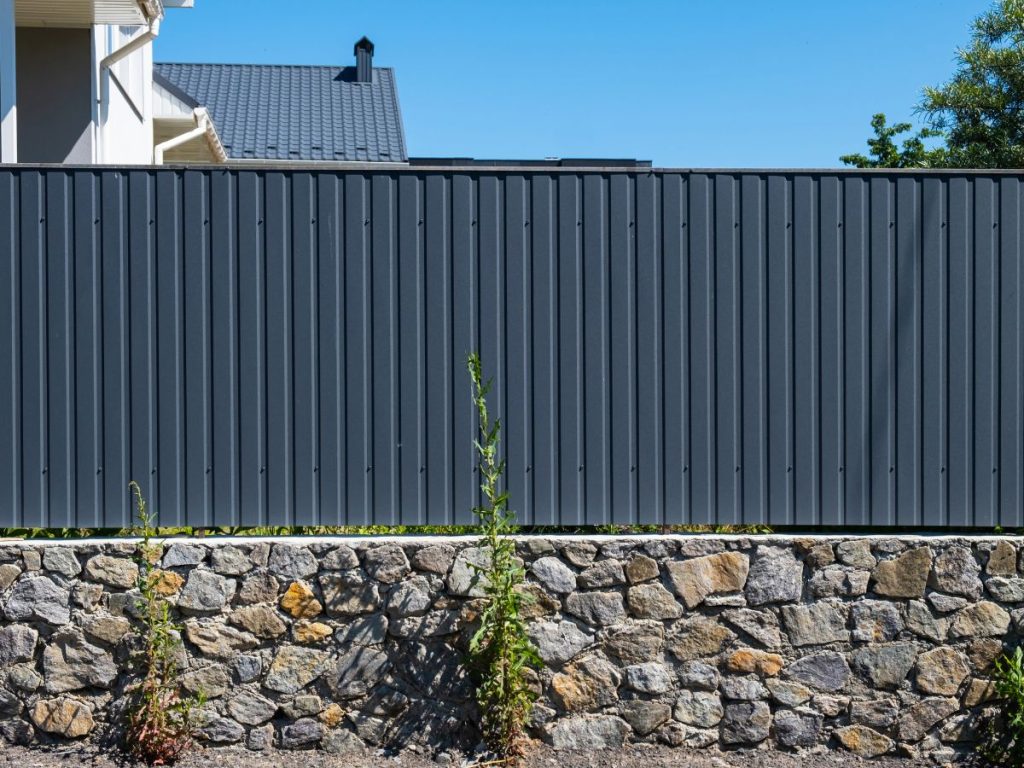
Putting up a residential corrugated metal fence at home is a great way to improve privacy. It also boosts curb appeal and lasts a long time. These modern fences look great and work well. They are a popular choice for homeowners who want new fencing options.
In this guide, we will show you how to install a residential corrugated metal fence. We will cover every step, from planning to execution. We will also share tips on costs, fencing materials, and maintenance to help you succeed.
Why Choose a Corrugated Metal Fence?
Corrugated fences offer a clean, contemporary look while being incredibly tough and resistant to the elements. Unlike traditional wood fence or chain link options, residential corrugated metal fence panels require less maintenance and last much longer.
Whether you want to secure a backyard, enclose a garden, or a3 zx6rdd a unique design, these fences work well for homes and businesses. They’re not only practical but stylish too, offering a sleek look that blends well with modern homes.
Some additional benefits include:
- Longevity: With proper installation and care, a residential corrugated metal fence can last over 30 years.
- Weather Resistance: Resistant to rain, snow, and UV damage, especially when made from galvanized steel panels.
- Eco-Friendliness: Many manufacturers create corrugated panels from recycled steel or corten steel, which reduces your environmental footprint.
Planning Your Residential Corrugated Metal Fence

Before starting the installation, careful planning is essential. Here’s what you need to consider:
1. Fence Design
Select a fence design that complements your home’s architecture. A modern residential corrugated metal fence has clean lines and a simple design. You can also add wood framing or decorative tops to customize it. Consider vertical versus horizontal panel orientation for different aesthetics.
You can also mix and match materials. A hybrid design with wood framing and metal fence panels can add warmth while keeping the strength of metal. Adding a decorative cap or lattice top can provide more personality to your installation.
2. Materials You’ll Need
- residential Corrugated metal fence panels (galvanized, corten steel, or steel aluminum options)
- Metal or wooden fence posts (pressure-treated wood or powder-coated steel recommended)
- Concrete mix
- Self-tapping screws, bolts, and brackets
- Measuring tape, post hole digger, string line, and level
- Protective gear (gloves, safety glasses)
The choice of fencing materials is vital. For longevity and resistance to rust, galvanized steel panels are a standard choice. However, corten steel offers a rustic appearance over time, which some homeowners find appealing.
3. Local Codes and Permits
Check with your local building authority to ensure compliance with zoning laws. Some areas have specific rules regarding fence height, materials, and distance from property lines. If you belong to a Homeowners Association (HOA), obtain written approval before proceeding.
4. Measuring Your Property
Measure the area you plan to enclose and mark the fence line. Use stakes and string to outline your fence path. Decide on the height and spacing of the panels, as this varies based on local laws and personal preferences.
A residential corrugated metal fence fits well into many different layouts and designs, providing both beauty and resilience.
Step-by-Step Installation Guide

Step 1: Mark and Dig Post Holes
Using your measurements, mark each spot where a post will go. The spacing should align with the width of your corrugated panel, typically 6 to 8 feet apart. Make sure the spacing is consistent to ensure a clean finish.
Dig post holes at least one-third the height of your intended fence. For example, a 6-foot fence would need holes at least 2 feet deep and about 10 to 12 inches wide. Adding gravel to the bottom of the hole improves drainage and prevents frost heave.
Step 2: Set the Posts
Place the posts into the holes and fill them with concrete. Use a level to make sure each post is straight and aligned. Secure the posts with braces if needed while the concrete sets. Allow the concrete to cure for at least 24 hours before attaching panels.
For added strength, you can use steel posts with flanges or brackets that accommodate the metal panel fence easily.
Step 3: Attach the Frame (if applicable)
If you’re adding a wood or metal frame to the metal panel fence, now is the time to install it. This will serve as the support structure for your panels. Use treated lumber or coated metal to avoid corrosion and decay.
A framed fence provides added visual appeal and stability, especially in windy areas. Double-check that everything is level and properly aligned before proceeding to the next step.
Step 4: Install the Corrugated Metal Panels
Begin attaching the corrugated metal fence panels to the posts or frame. Use screws with rubber washers to prevent water from seeping in and causing rust. Overlap each panel by at least one ridge or groove to ensure strength and prevent gaps.
Panels with a deep groove design provide extra support. They are especially helpful in places that experience strong winds. Ensure you start from one end and work systematically across to maintain consistent spacing and alignment.
Step 5: Add Finishing Touches
Cut off any extra material with a metal cutting tool. Seal the edges with protective coatings. Check the fence for sharp points or loose areas. You can paint or powder-coat the panels for added protection and aesthetic appeal.
Cost Considerations
The total cost of installing a residential corrugated metal fence can vary based on several factors:
- Type of metal (corten steel, steel aluminum, or galvanized)
- Length and height of the fence
- Design complexity (e.g., with or without framing)
- Additional features like gates, lighting, or accents
- Labor (DIY vs. professional installation)
On average, material costs range from $10 to $25 per linear foot. When factoring in labor, the price may increase to $30–$50 per linear foot. Even though this fencing costs more at first, it saves money over time. It is durable and needs little maintenance.
Maintenance Tips

Once installed, your residential corrugated metal fence requires minimal upkeep. Here are some tips to maintain its beauty and function:
- Routine Cleaning: Rinse the panels with a garden hose or pressure washer to remove dirt and debris.
- Rust Inspection: Check for rust spots or scratches. Use touch-up paint or sealants to prevent further corrosion.
- Tighten Screws: Over time, weather may loosen fasteners. Periodically inspect and tighten them as needed.
- Vegetation Control: Keep plants and shrubs from growing too close to the fence to prevent trapped moisture.
Corten steel will naturally form a rust-like patina, which acts as a protective barrier. Don’t be alarmed by the color change; designers intended it as part of the design.
Residential Corrugated Metal Fences vs. Other Fencing Types
Let’s take a quick look at how corrugated fences compare to other popular materials:
| Feature | Corrugated Metal | Wood | Chain Link |
| Durability | High | Medium | Low |
| Maintenance | Low | High | Medium |
| Privacy | High | High | Low |
| Style | Modern | Traditional | Industrial |
| Lifespan | 30+ years | 10–15 years | 10 years |
Clearly, a residential corrugated metal fence stands out for its durability, low maintenance, and stylish appeal.
Versatility in Applications
Corrugated metal isn’t just for homes—it’s widely used for residential and commercial properties as well. From industrial zones to trendy cafes, this fencing solution blends functionality with modern aesthetics. Some businesses use residential corrugated metal fence panels as decorative backdrops or partitions within the property.
You can design residential corrugated metal fences in creative ways:
- Vertical or horizontal orientations
- Painted in bold or neutral colors
- Framed with wood or stone
- Combined with gates, screens, or trellises
The flexibility of design allows homeowners to create a unique fence that reflects personal style while meeting practical needs.
Final Thoughts
A residential corrugated metal fence is more than a boundary. It is a statement piece that blends function, style, and durability. By using this guide, you can easily install a fence. This will improve your home’s security and its look.
With a bit of planning, the right tools, and quality materials, you’ll have a fence that stands strong and looks great for decades.
If you need a reliable partner for quality fencing materials or custom fence designs, Perimtectx can help. We offer expert solutions made just for you. Whether you want to install it yourself or need professional help, they’ve got you covered. Visit Perimtectx today to explore their range of innovative fencing products!
